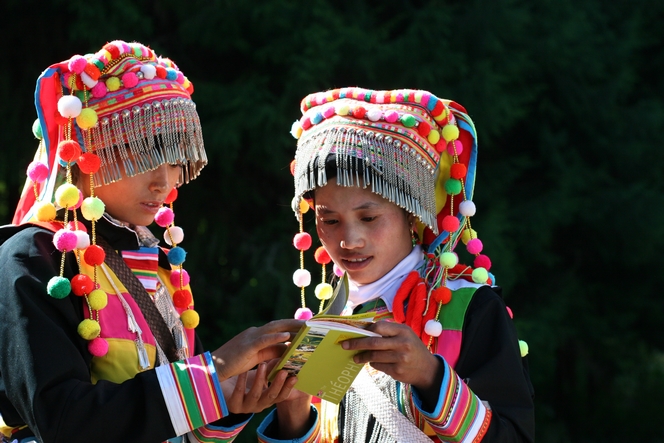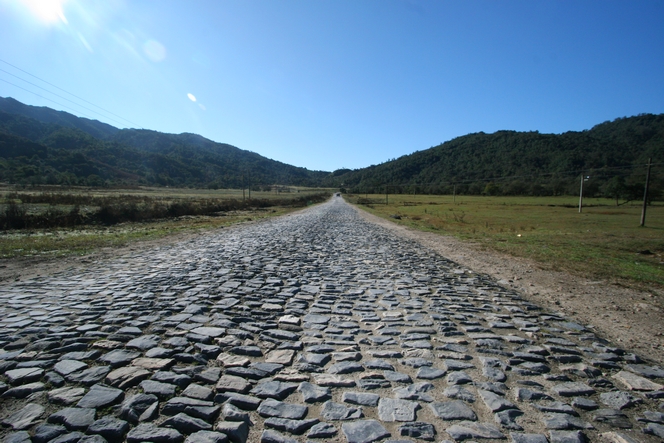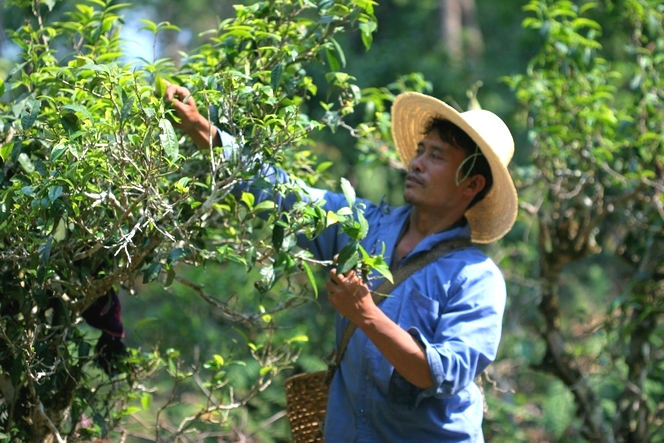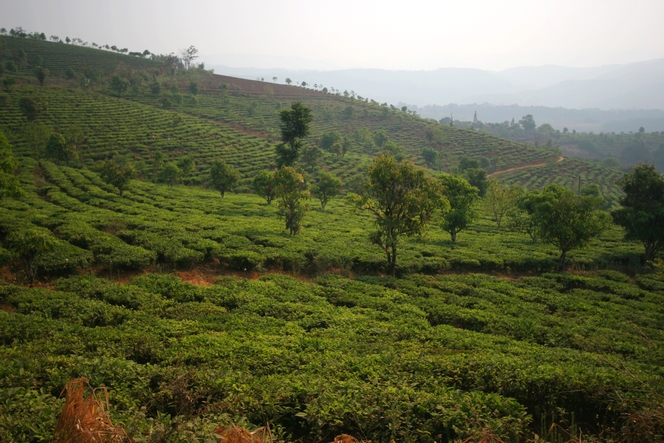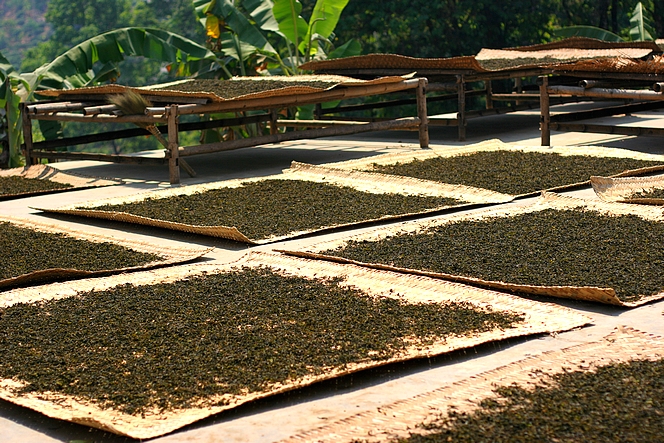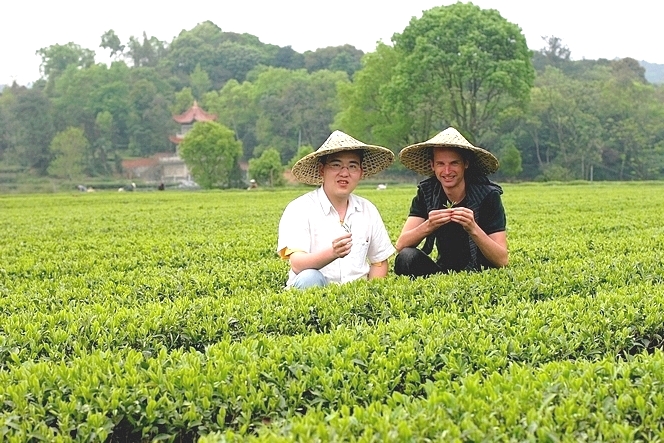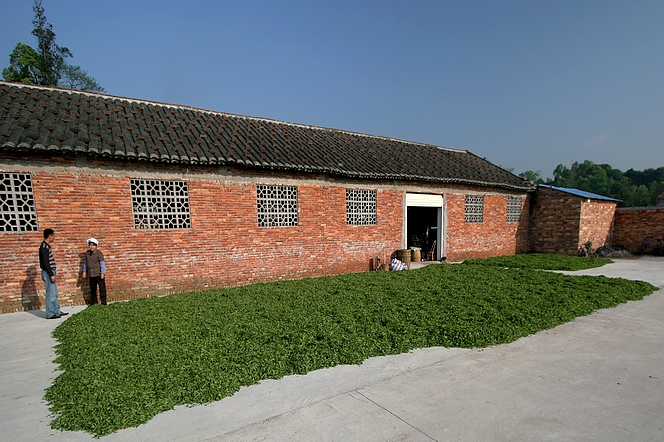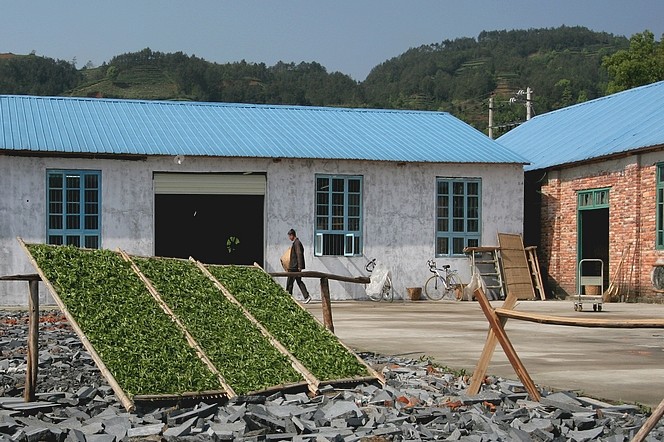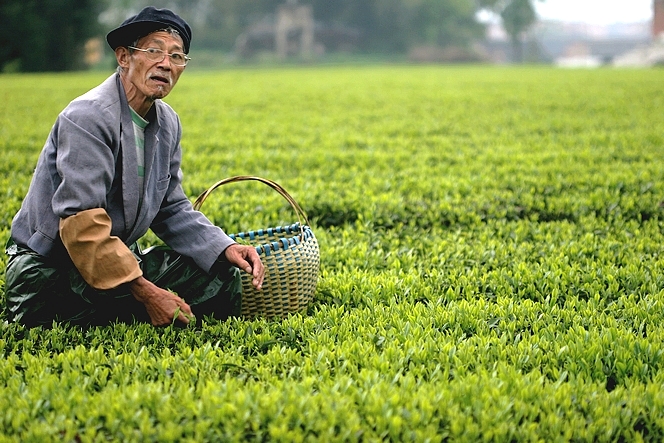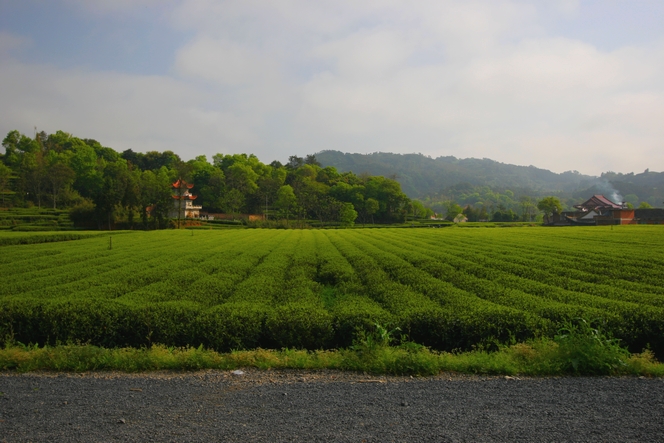Many ethnic groups live alongside one another in the province of Yunnan (China). The Hans are there of course, as is the case across China, but at least 20 minority groups live there too, including the Dais, Miaos, Nus, Huis, Was and Yis. Here, on the border between China and Myanmar (Burma), we are with the Lisus.
These people live from farming in the remote mountainous regions. They also grow tea, or rather, they harvest the leaves that grow on giant tea plants. It is an incredible sight to see them in their traditional costumes climbing to the tops of trees 10 or 20 metres high, wicker baskets on their backs, working away. It makes you hold your breath.
Here, I have caught two Lisus women closely examining the Théophile Guide. They are looking at the list of stores on the back cover with quite serious expressions that contrast with the strings of brightly coloured fluffy balls that swing gently on either side of their faces.

